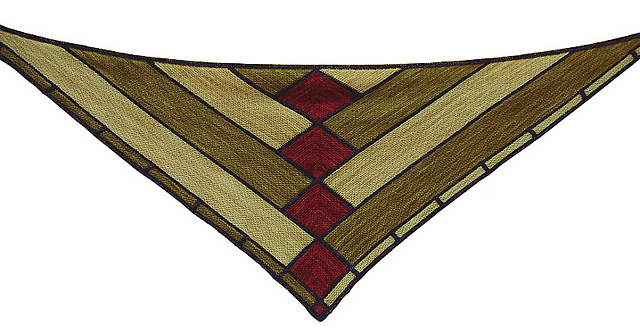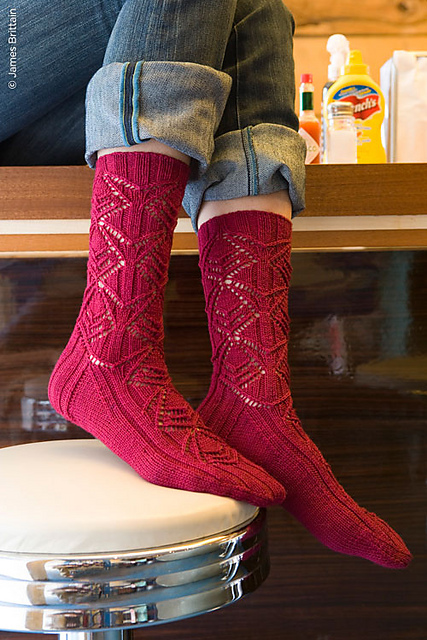I got to interview Nancy Whitman, NancyWhitmanKnits on Ravelry.
You as a designer questions:
What is your design process?
The first step in any of my designs is the inspiration. Typically, it’s something visual that literally catches my eye. The source of inspiration could be anything from a stitch pattern, a building, fabric, or even something I see in a movie. Then I pick a yarn and begin the dreaded swatching. Some modular patterns do not require swatching if I already know the garter stitch gauge information for the chosen yarn. Then it’s just a matter of working out measurements to determine the sizes for each individual element. Other designs definitely require swatching. I rarely write the pattern directions before casting on, as I prefer to write them as I knit. When the sample knit is done, so is the pattern. Then it’s off to the tech editor and then the test knitting begins. Once the test knit is over, the pattern is ready to be published.
What influences your style? (I’m particularly fond of your Eden Prairie,
and the proportions of the motifs in your socks.)
It seems that I gravitate to graphic designs in bold colors or with color contrast. The designs could be achieved with color blocking or stitch patterns, but it’s the graphic element that grabs me. As far as proportions go, I do what looks pleasing to me. There could be some proportion rules out there, but I am not aware of them.
What about designing and producing patterns are you most adept at, what
parts are you most fond of, and what parts are challenging? (Pattern
Grading, the last week of editing, coming up with a name for a project,
self promotion?)
This is an interesting question. I’m not sure that it’s a particular thing I am adept at in each pattern since every pattern has its own challenges. For example, I have names for designs that are still only ideas in my head, and others that I can’t name even once the pattern is ready for publishing. The best way I can answer your question is to say that modular patterns are easiest for me. Perhaps it’s more a function of how much I enjoy knitting them, but those seem to come to me the most fully formed. On the challenging side of things, is losing inspiration. In all my creative pursuits, I do what inspires me. If another idea comes to me while in the midst of something else, it takes a lot of discipline to complete the one I’m on before moving on. I’m not the most disciplined designer.
What do you find most important in photography?
Finding someone else to take the picture! All kidding aside, I think the first picture people see should clearly show the overall design, then folks know right away if they like the pattern. If you browse the pattern tab on Ravelry, you only see one picture. I find it frustrating if I can’t make out what I’m looking at. Styled pictures showing the design in use are also important, but in my opinion, those rarely make a good first-impression photo.
What has your experience with Knit companion been like?
Knit Companion has been a pleasure to work with. I forward the patterns and Sally (managing partner) does the rest to generate the knit Companion version. It’s another venue for designers. The feedback I have heard is that people who use knit Companion really seem to love it.
Does anything intimidate you in knitting?
None of it is intimidating but grading a garment like a sweater would be challenging. In the last ten years or so, I have been drawn to more straightforward items that have standard shaping, like socks and hats, and shawls. It gives me the ability to work on the graphic design elements that I find so appealing.
When you want to learn something, do you look it up in a book, on U-tube, or seek a real person to teach you?
I go online when I want to learn something. I have a large collection of knitting books and regularly look things up, but online resources are way more comprehensive. I remember the first time I learned about short rows with wrap & turn directions. A few years later, you could go online and find many more methods of knitting short rows, and even improvements in how to knit the warp & turn kind. I’m a big fan of online learning.
Any repetitive motion disorders due to knitting or crochet? How do you deal with them?
No repetitive motion issues, but I have developed some arthritis. I take more frequent breaks while knitting and not work for hours on end. It seems to help.





